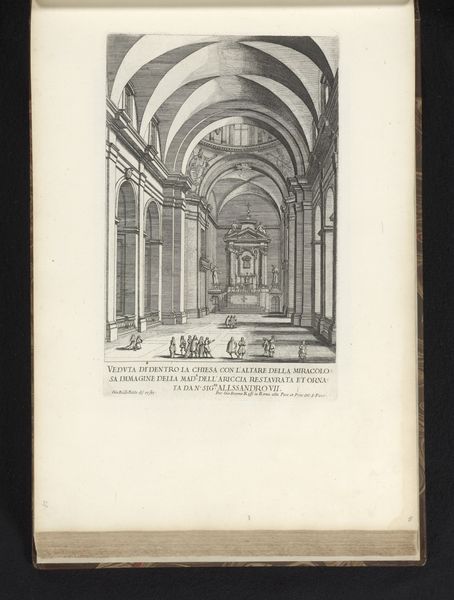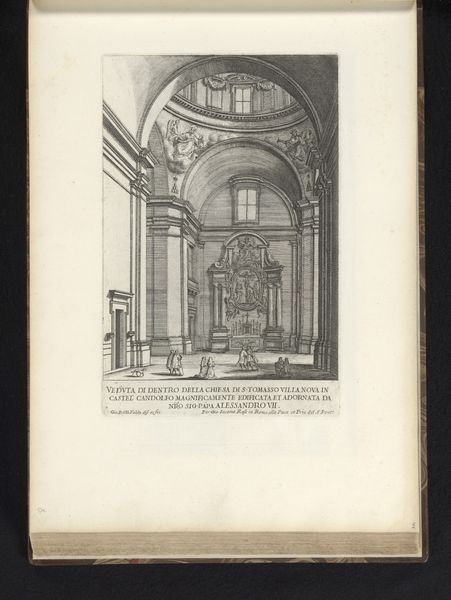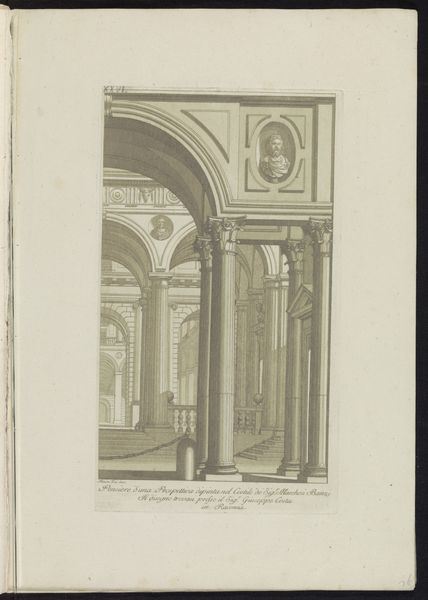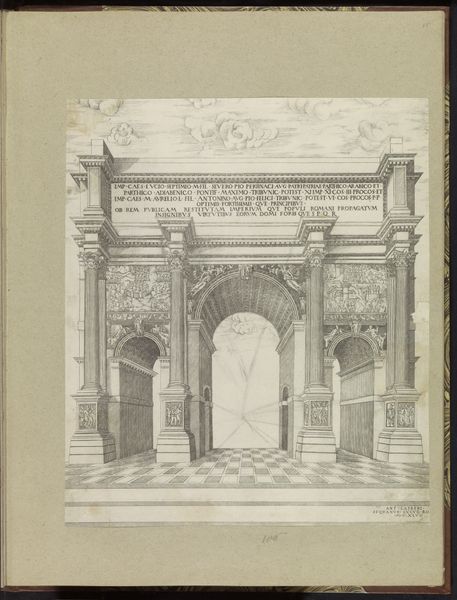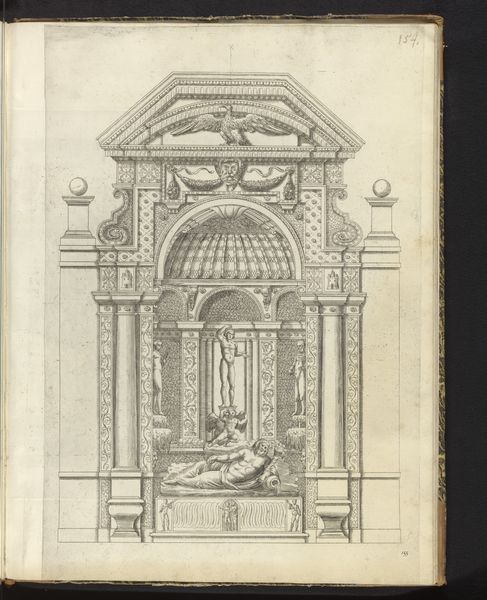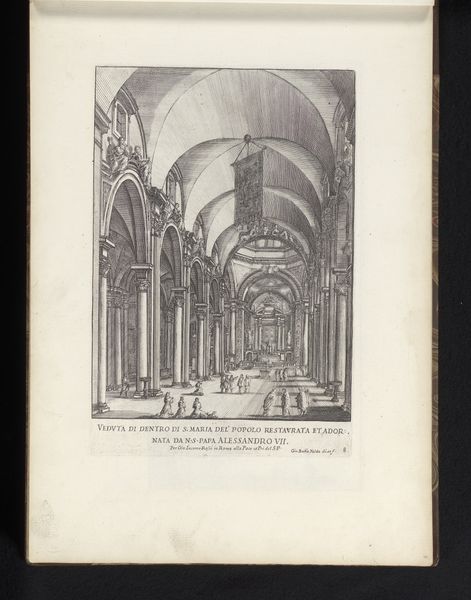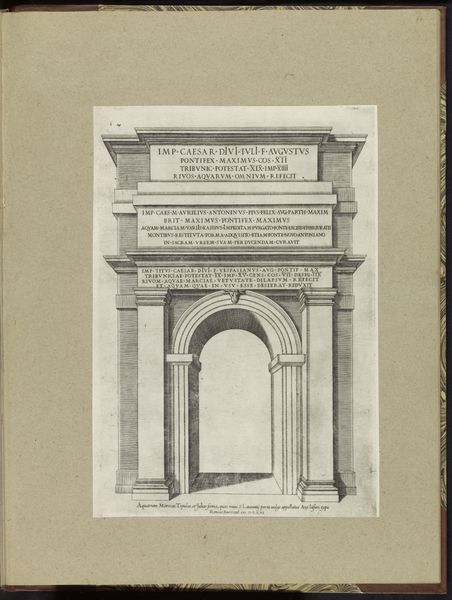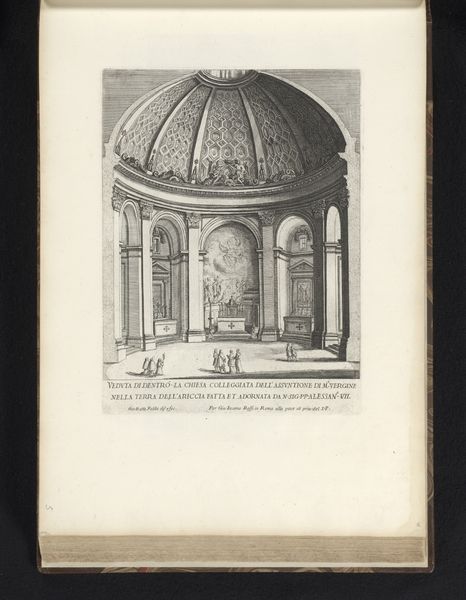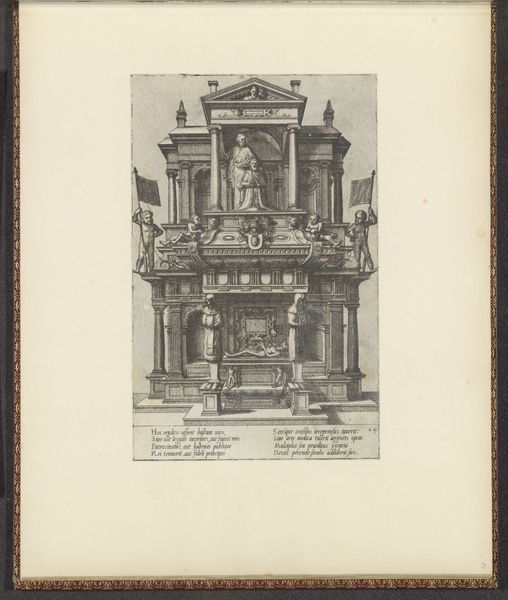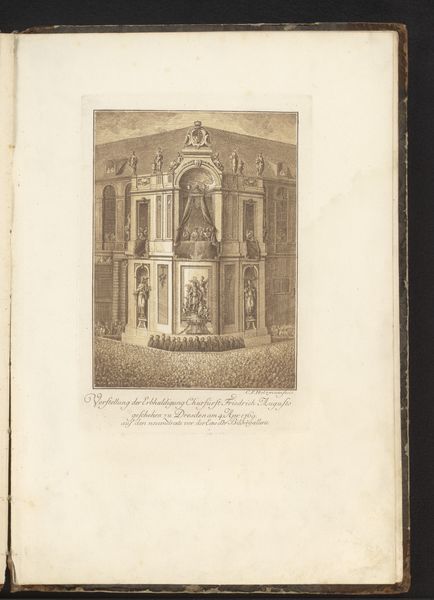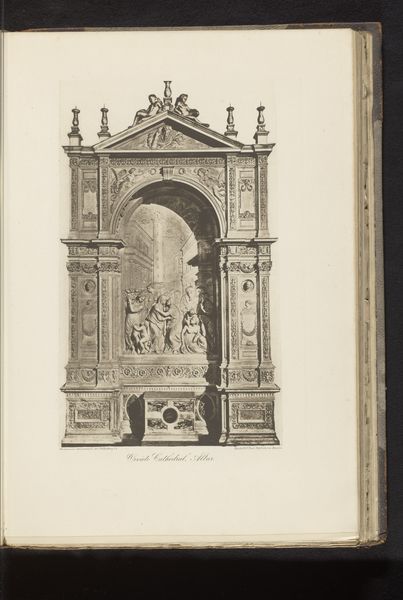
print, engraving, architecture
#
baroque
# print
#
perspective
#
line
#
cityscape
#
italian-renaissance
#
engraving
#
architecture
Dimensions: height 291 mm, width 174 mm
Copyright: Rijks Museum: Open Domain
Curator: Let’s take a look at this 1665 print by Giovanni Battista Falda, titled "Scala Regia te Vaticaanstad." It's held here at the Rijksmuseum. Editor: The first thing that strikes me is how deeply theatrical it feels—all those receding arches conjuring a grand stage! Curator: Absolutely. This work operates within the artistic framework of the Italian Renaissance while demonstrating elements of the Baroque, notably a use of dramatic perspective to underscore power and authority. Falda understood how space and its representation could construct social narratives. Editor: It's all in the technique, right? Engraving allows for these meticulous lines that emphasize the tangible architecture. How else can we understand this use of labor to emphasize authority? Curator: The architectural space itself serves as a metaphor. The print captures an idealized view of the Vatican—a carefully curated image reflecting Pope Alexander VII's authority. By rendering this space with such precision, Falda legitimizes the institution. The image functions as both a document and a form of political propaganda. Editor: It really makes you think about who benefits from all this meticulous labor, this engraving work. The end result isn’t simply about displaying craft. It also serves political interest and promotes an unequal hierarchy. Curator: Precisely. Perspective, in this case, isn’t just a technique; it’s an ideological tool used to visually reinforce social and religious structures. Look closely and observe the human figures, tiny, almost swallowed up by the scale of the architecture; this manipulation emphasizes their place within the hierarchy. Editor: That resonates—the composition reinforces the idea of the church’s monumental dominance over its adherents. I keep circling back to labor here: all those precisely etched lines in service of architectural grandeur... it underscores the uneven exchange between the effort and those enjoying the work in its completion. Curator: I've also considered how contemporary audiences might engage with a piece like this in discussions about representation, visibility, and institutional power... Editor: And it begs that question about materiality and power dynamics that persist when art gets made. I think this print holds a magnifying glass up to it! Curator: Indeed, a very astute point that brings these complex issues into sharp relief!
Comments
No comments
Be the first to comment and join the conversation on the ultimate creative platform.

